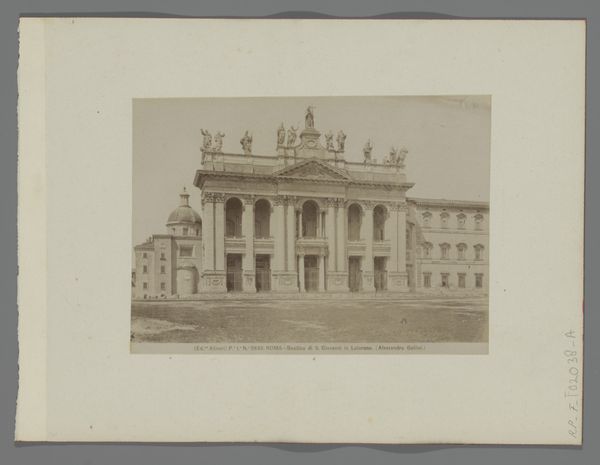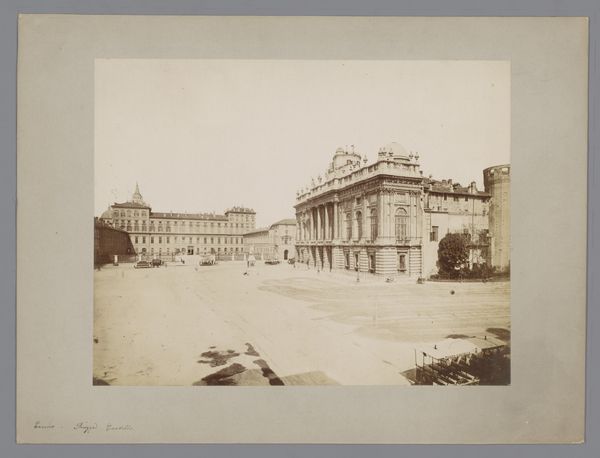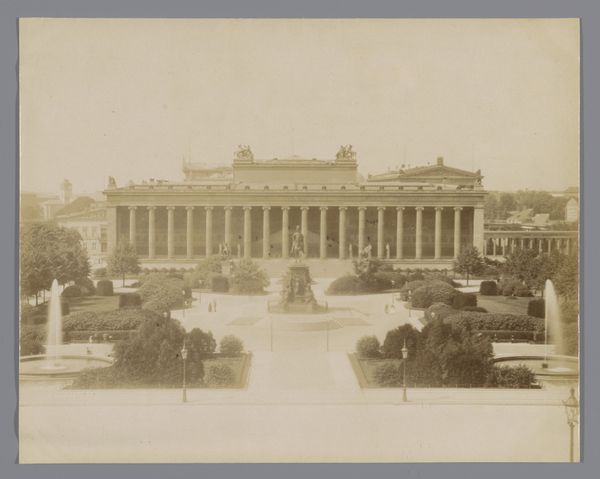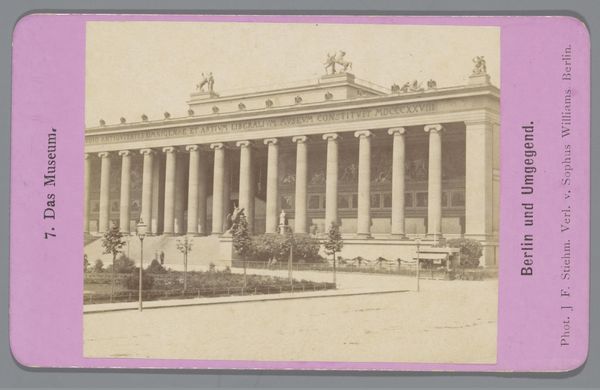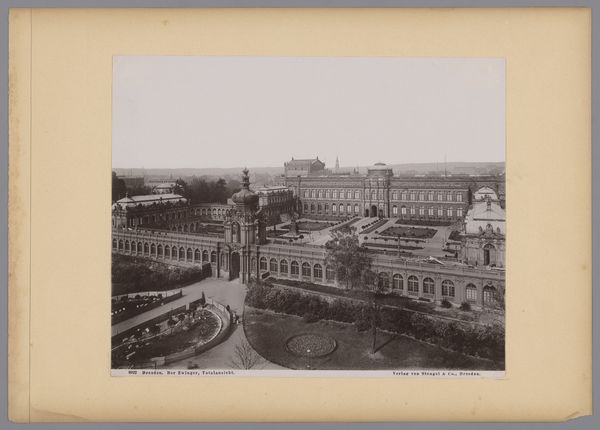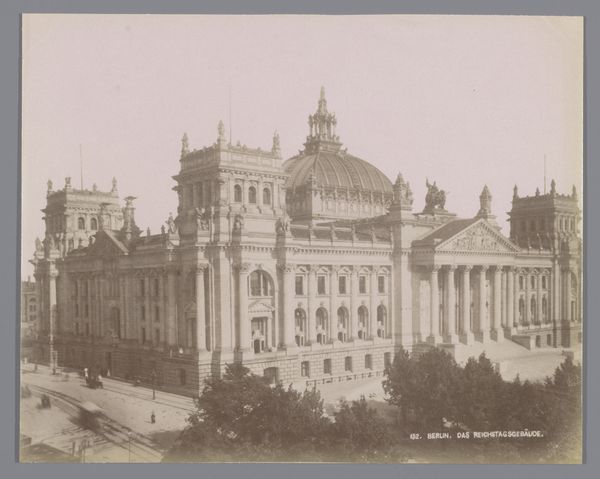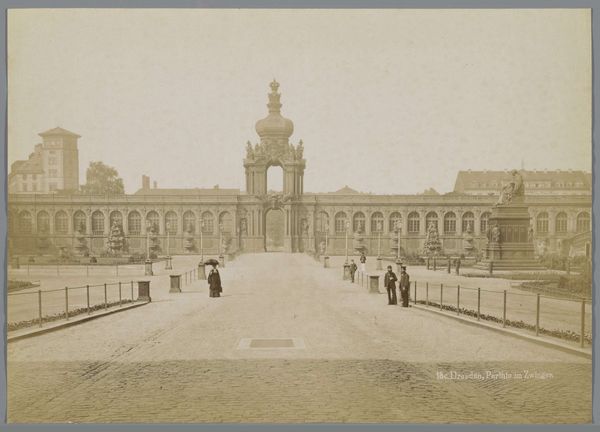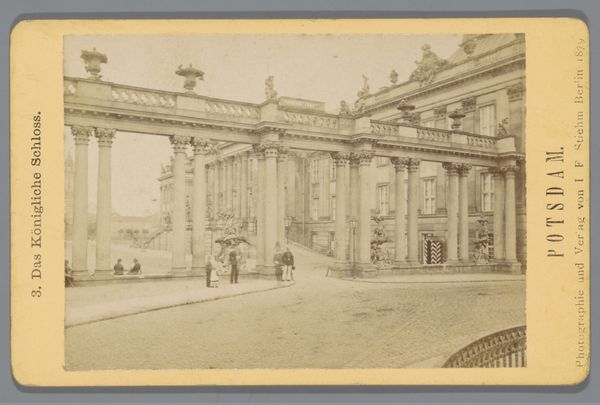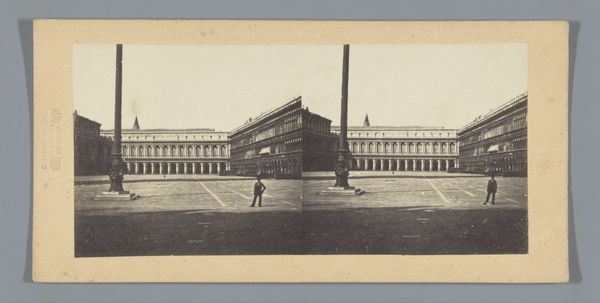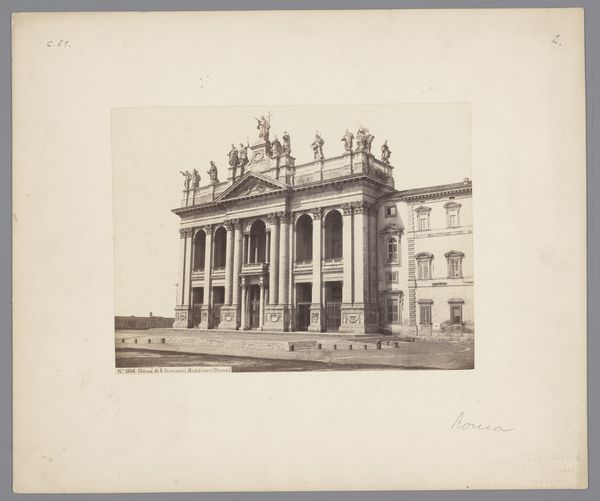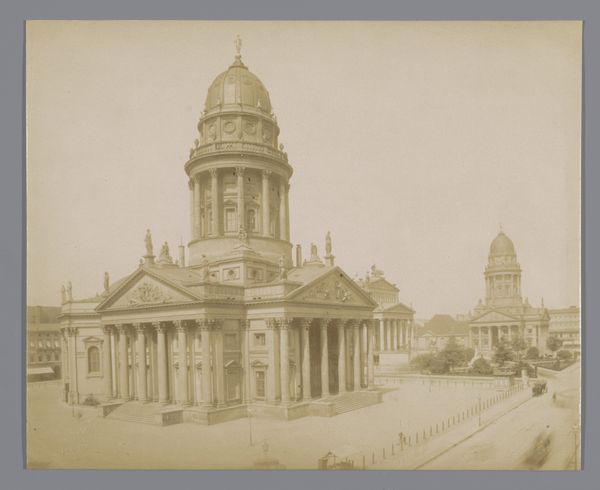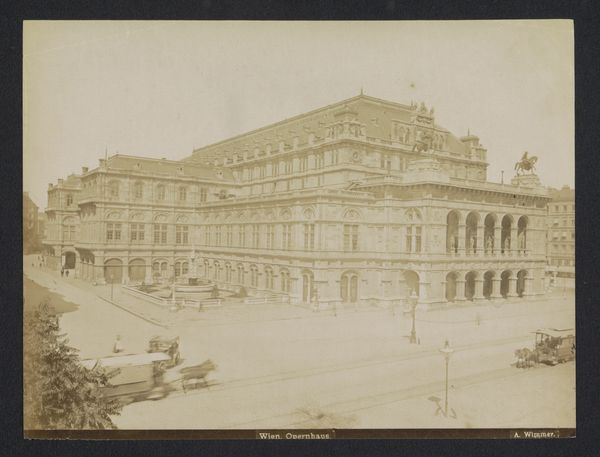
Dimensions: height 201 mm, width 263 mm
Copyright: Rijks Museum: Open Domain
Curator: This albumen print, attributed to A. Wimmer, captures the Austrian Parliament Building in Vienna sometime between 1884 and 1900. My initial impression? It's got this strangely delicate, almost ephemeral quality, considering it's such a monumental structure. Editor: Absolutely. The sepia tone and the way the light filters gives it this dreamlike weightlessness. The architecture screams neoclassical power and solidity with its rigid lines, the imposing columns, and all those stoic sculptures lined up top—but there is also that light, you nailed it, I almost thought this was watercolor when I first glanced at the image. All these potent, cultural signifiers whispering power, history, legacy... it's all a very carefully constructed illusion. Curator: Illusion, yes, exactly. It's funny, isn’t it? How photography, which we think of as capturing "reality", can also be used to create very deliberate narratives, right? Neoclassicism was often favored for governmental buildings, because these visual markers consciously pulled from the ideals of ancient Greece and Rome. Here they try to evoke a sense of established, enduring authority and civilization. It’s kind of like visually declaring, “We’re legitimate! We have history!” Editor: Oh, that’s very clever, to tie in Neoclassicism and photography here; it makes a potent cultural commentary, no doubt. And consider that this photograph was taken during a time when the Austro-Hungarian Empire was grappling with internal tensions and nationalist movements. Imaging power in physical form—architecture—and documenting it became its own symbolic and psychological operation, solidifying claims. Every visual choice sends a distinct, deliberate signal. That light, those imposing pillars… symbols, symbols everywhere! Curator: Right! Look at how empty the plaza in front of the building looks. It’s stately, yes, but almost unsettlingly sterile. Not much bustling street activity. What feelings might it conjure in us? Editor: Impressive. Distant. Intimidating. All of the above, really. The space almost serves as a moat around power, creating the feeling of it being untouchable. That's so interesting – it's a photograph portraying power and control, while being evidence of its cultural projection, captured in fragile emulsion that we now contemplate 100 years after it was printed. Curator: It all comes down to symbols, I suppose, as power likes to project. I mean, it makes one wonder what that projection will mean in a hundred more years. Editor: Food for thought! Thanks for this great discussion.
Comments
No comments
Be the first to comment and join the conversation on the ultimate creative platform.

